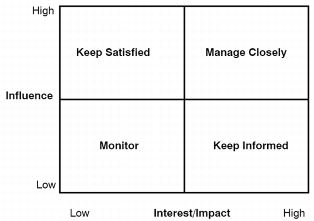
Whichever the need, you’re most likely to find the options to cater to it. Adding ecommerce platforms to this connection can help you turn your accounting into a single source of truth about your sales, products, and customer behavior. One key feature is the ability to track sales and income from various sources, such as online storefronts, marketplaces, and payment processors. This way, ecommerce businesses can keep accurate records of their revenue streams. Once you’ve begun a QuickBooks subscription and imported relevant merchant details, it’s time to set up your Chart of Accounts.
Set up your Shopify store
You can also manage orders, communicate with customers, and promote listings within the marketplace. Some of these services come with a price – seller fees – that you might pay for this or that functionality. Inventory management is another critical feature that allows ecommerce businesses to track stock levels, monitor product costs, and adjust inventory quantities as needed. As a result, there’s more control over product availability to meet customer demand while minimizing excess inventory costs.
Join millions of self-starters in getting business resources, tips, and inspiring stories in your inbox. Follow Shopify’s official guided tutorial to learn how to set up your Shopify store. It’s pretty straightforward – you select it from the available options and grant Synder access. QuickBooks comes in a desktop and cloud-based version – called QuickBooks Desktop and QuickBooks Online – catering to various business needs and sizes.
E-commerce accounting FAQ
Business expenses that may have been paid in cash or through an unlinked account can easily be forgotten and not properly inputted into bookkeeping. When the only expense record is a physical receipt, QuickBooks allows eCommerce operators to upload them to their account via mobile device, computer, or email account. So, you can set up your balance sheet, cash flow statement, and profit and loss statement, alongside building custom financial dashboards. Stay managing and recording cash receipts examples and more updated on the latest products and services anytime anywhere.
How to Start an e-commerce Business on Amazon and Shopify
These platforms and marketplaces play a significant role in operating a business, regardless of whether you do it yourself or through an ecommerce-as-a-service provider. You can link ecommerce platforms to QuickBooks to track sales, expenses, and inventory in one place. Tax calculations and compliance can be complex for ecommerce businesses. QuickBooks Synder simplifies tax management by automatically tracking taxes based on transaction data and mapping tax rates to the appropriate tax accounts in QuickBooks.
- It offers features such as customizable storefronts, product management tools, and built-in marketing solutions.
- The exposure can help you increase sales and reach new audiences without investing heavily in marketing efforts.
- Technology has made it relatively simple and inexpensive to start an e-commerce business, especially when compared to the capital investment required from potential investors to open a physical storefront.
- It’s essential to run financial reports, particularly a Profit and Loss, Balance Sheet, and Cashflow Statement for cash flow management, ideally on a weekly or monthly basis.
- ” There are definitely some confusing articles online, but those are referring to the sunsetting of TradeGecko, which was the precursor to QuickBooks Commerce.
- This integration provides a unified brand experience and simplifies managing online presence.
Accounting for e-commerce

We don’t guarantee that our suggestions will work best for each individual or business, so consider your unique needs when choosing products and services. If you’re wondering what we think of QuickBooks as accounting software for your business, check out our review. Accepting credit cards in today’s small business marketplace can translate into closing every sale and delivering good customer experience. Checkout should be a breeze once you’re set up to accept credit cards on your website. Customers should be able to complete a transaction in as few clicks accounting technology as possible.
QuickBooks separates your revenue from taxes and fees, seamlessly mapping it to the right accounts. Accounting rules and tax regulations differ by country and state, so staying up to date is crucial to your success. Even if accounting isn’t your strong point, there are a few simple guidelines to follow for managing a smooth ecommerce operation. The two accounting methods are cash accounting and accrual accounting. An ecommerce company can use either method, but not both at once. Shopify comes with built-in tools to help manage warehouse and store inventory in one place.
Connect Shopify to QuickBooks Online account via the OneSass app to sync your orders, products, and inventory through data exchange between Shopify and QuickBooks. Once your Etsy account is created, click ‘Open Your Etsy Shop’ to start customising your online store. Set the following preferences to get started with setting up your online Etsy store. Utilize the 24/7 accessibility to enable customers to browse and buy products at any time. Your company can effectively meet the difference between direct costs and indirect costs the varying demands of customers in various time zones, resulting in an increase in potential sales. Once you’re satisfied with the integration setup, perform a full data sync to ensure that all current or historical data is transferred to QuickBooks accurately.

Leave a Reply